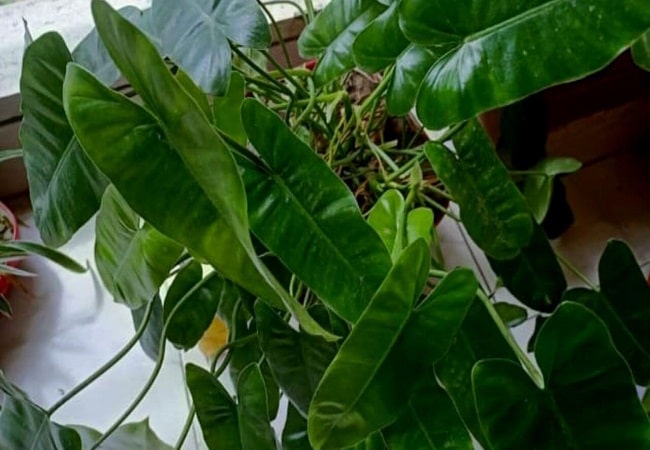The Philodendron Burle Marx is a beautiful plant with heart-shaped, long, narrow, wrinkled leaves. It is named after Roberto Burle Marx philodendron care, a famous Brazilian landscape architect who made using plants a popular part of building design.
The plant belongs to the family Araceae. Once it gets bushy enough, its long leaves grow over each other like layers, making it a beautiful plant for a pot. It looks good and is easy to take care of. It also cleans the air, which makes it a popular choice for houseplant owners.
In this article, I’ll show you how to take care of a Philodendron Burle Marx in the best way possible. Read carefully to find out what this beautiful tropical plant needs to grow healthy leaves and beautiful stems.
Quick Navigation
- 1 The Philodendron Burle Marx Basic
- 2 The Essential Parts Of Burle Marx Philodendron Maintenance And Care
- 2.1 Philodendron Burle Marx Light Needs
- 2.2 Water Requirements For Philodendron Burle Marx
- 2.3 Best Soil For Philodendron Burle Marx
- 2.4 Ideal Fertilize For Burle Marx Philodendron
- 2.5 Temperatures and Ideal Humidity Levels For Burle Marx Philodendron
- 2.6 Philodendron Burle Marx Repotting
- 2.7 Philodendron Burle Marx Pruning
- 3 Philodendron Burle Marx Toxicity
- 4 Problems You Can Face For Philodendron Burle Marx
- 5 Frequently Asked Questions
- 6 Final Touch
The Philodendron Burle Marx Basic
| Scientific Name | Philodendron Burle-marxii |
| Common Name | Burle Marx philodendron or philodendron Burle Marx |
| Family | Araceae |
| Origin | Brazil |
| Maximum Reachable Height | Two feet tall and two to three feet wide |
| Soil Type | Well-draining soil |
| Soil pH | The pH value of the soil is from 5.6 pH to 6.5 pH |
| Temperature | From 60 to 75 degrees F |
| Exposure To Sunlight | Bright indirect sunlight |
| Water | Watering once a week is plenty. During the summer, make it better. Avoid overwatering |
| Preferable Fertilizer | Plants that grow quickly need fertilizer all year (spring and summer). Do it this month. Use fertilizer for indoor plants. |
| Produces Flowers | Mature plants may produce red-purple flowering spathes. However, this is rare. |
| Toxicity | Toxic to pets and human |
| Pests | Aphids, mealybugs, scale, spider mites |
| Diseases | Root rot |
| Identification | Emerald green elongated heart-shaped leaves |
The Essential Parts Of Burle Marx Philodendron Maintenance And Care
The Burle Marx Philodendron is one of the most well-liked options for indoor and outdoor plants. This plant is famous for its beautiful green leaves, which require little maintenance. Here are some suggestions for taking care of a Philodendron Burle Marx if you plan to get one for your house:
Philodendron Burle Marx Light Needs
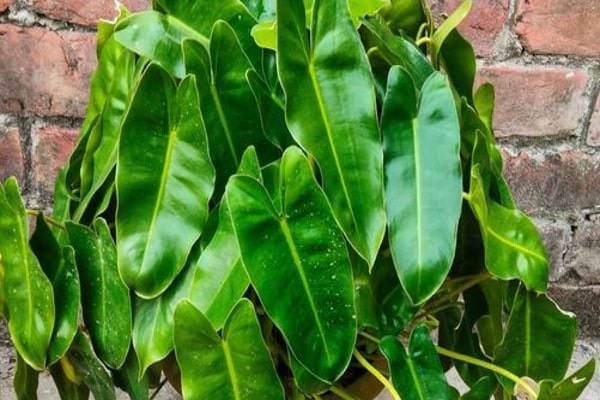
Philodendron Burle Marx likes bright light that comes from the side. It can live in low light but needs indirect sunlight to grow.
Direct sunlight can burn, change the color of, or scorch the leaves of a plant. A location where your plant may receive adequate natural light without receiving too much direct sunshine should be The best windows that face north or east.
Burle Marx likes light shade and indirect sunlight. At noon, the sun can burn leaves. If there is shade in the afternoon, get sun in the morning or evening.
Keep it near a window with a curtain that lets in some light but blocks some of it.
Some kinds of this plant lose their colors in the shade. This plant grows best when the humidity is between 40% and 80%.
When the moisture level drops below 40%, the plant is dry. If the number is above 80%, fungal infections are likely. The air is humid in bathrooms and kitchens. You can add humidity with a pebble tray, plants, or a humidifier.
Water Requirements For Philodendron Burle Marx

Take care of your Philodendron Burle Marx by watering it like you would most other Philodendron plants.
The initial objective is to maintain moist soil while being careful not to overwater your plant or dry out the soil. Root rot and other plant diseases are easily spread by overwatering.
However, the number of water plants that need to be watered depends on the season. During spring and Summer, give your plant regular waterings to keep the soil consistently moist. However, during the colder months, you can wait a little longer between waterings.
It’s enough to water once a week. Fix it up over the summer. Don’t give your Burle Marx philodendron too much water.
Best Soil For Philodendron Burle Marx
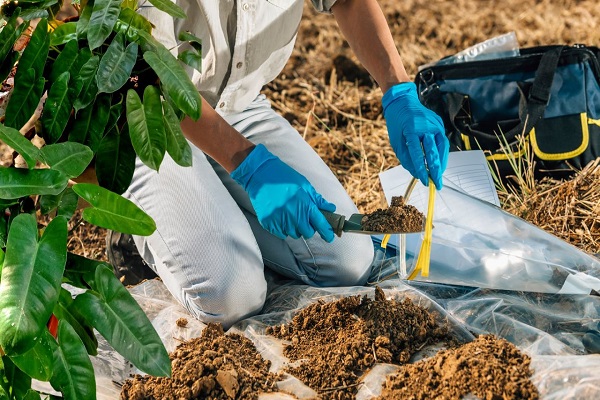
Philodendron Burle Marx grows best in a mix of soil that drains well and has many holes. Why is this so important to do? If the plant’s soil doesn’t drain properly, it will stay wet for a long time, which makes it more likely that the roots of the plant will rot.
Most of the time, making your potting soil mix is a good idea because you can add things like perlite, bark, gritty sand, pumice, vermiculite, and so on. Because of this, it’s always a good idea to make your potting soil mix. The fact that these changes involve large parts makes them very important. Macropores are spaces that are full of oxygen and are made by these kinds of big particles. Root rot is less likely to happen when macropores and oxygen are in the soil. If there isn’t enough oxygen, a plant is more likely to get an infection from bacteria or fungi that will cause root rot.
If you want to make your potting soil mix, you will need,
- 4 parts coconut coir
- 2 parts of orchid bark
- 1 part perlite 1part pumice
- 1 part of activated charcoal
- 1 part worm poop.
Ideal Fertilize For Burle Marx Philodendron

Use a high-quality all-purpose or slow-release fertilizer to hasten your Philodendron’s development. Using a high nitrogen content fertilizer is crucial no matter what you decide.
Dyna Gro, which includes all 16 nutrients your plant requires, is the best fertilizer for Philodendron Burle Marx. Observe the dose instructions on the container alone. Any fertilizer you use falls under this.
I advise feeding your plant once a week while it is developing and cutting back to once a month once the cold weather sets in. Before you feed your plant, water it to ensure the soil is moist. The fertilizer might badly harm the roots if the soil is dry when feeding occurs.
If you repot the Burle Marx Philodendron once a year, you won’t need to fertilize it. A Philodendron plant that has been repotted frequently receives new nutrients.
You may have read that you should fertilize in the spring or summer, but this isn’t accurate. When your Philodendron Burle Marx is actively developing is the best time to fertilize it if you want to do so. No matter what time of year it is, all that matters is if your plant is growing or not.
The nutrients will only build up in the soil if you fertilize when your plant isn’t growing. You don’t want the roots to burn due to this, which is a possible outcome.
Temperatures and Ideal Humidity Levels For Burle Marx Philodendron
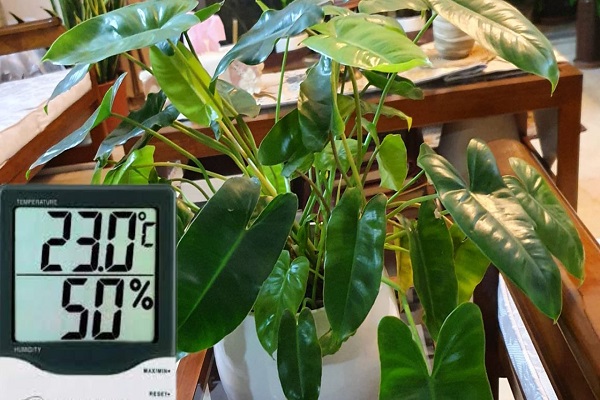
Your Philodendron will flourish at temperatures between 60 and 75 degrees Fahrenheit (16 and 24 degrees Celsius). Your plant’s growth will be stunted if the temperature drops below this range.
Your plant will cease to develop if the temperature dips below 10 degrees Celsius (50 degrees Fahrenheit).
The Philodendron Burle Marx is a tropical plant that thrives in damp conditions. They can make do in low-humidity environments, but their growth will be stunted.
There are various ways to simulate a tropical environment and maintain adequate humidity levels for your plant.
Some options for introducing moisture into the air are listed below:
- Using a humidifier, you can increase the humidity in the room where your Philodendron is.
- Spray the leaves with a spray bottle. As the water evaporates, it leaves moisture around your plant.
- To raise the humidity in the space, use the pebble tray technique. Only a tray, some stones, and water are required. Here’s to building up your tray.
- Fill the tray with pebbles.
- Pour water into the tray. Ensure the water level is almost to the top and doesn’t overtake the pebbles.
- Place your Philodendron on top of the pebbles, so the evaporating air can directly go to your plant.
Philodendron Burle Marx Repotting

The procedures for repotting Philodendron Burle Marx are as follows:
- Two parts of all-purpose soil, 1 part perlite, 1 part bark, or another amendment like pumice, sand, etc., should be included in your potting mix.
- Take a pot that is one size larger than the existing one.
- To remove the plant, use a root rake or spatula to remove soil from the pot’s sides.
- Remove the plant from the pot, then nudge the rootball to lose.
- Examine the roots. Prune any unhealthy, mushy, stinky, or squishy roots you find.
- After repotting the plant, fill the remaining third of the container with soil.
- Water the plant after firmly pressing the soil around it.
- It might be helpful to put it in front of a window with at least mild indirect light.
Philodendron Burle Marx repotting is not difficult. Generally speaking, repotting your philodendron plant is advised:
- To supply it with wholesome nutrients,
- remove old, compacted soil and add fresh, oxygen-rich soil.
- Boost its growth whenever the existing plant container becomes insufficient.
Another helpful suggestion is always to use pots with drainage holes since this help to drain excess salt and avoid the buildup of extra water.
The likelihood of root rot is decreased because terracotta pots help the soil dry up more quickly by absorbing water from it.
Philodendron Burle Marx Pruning
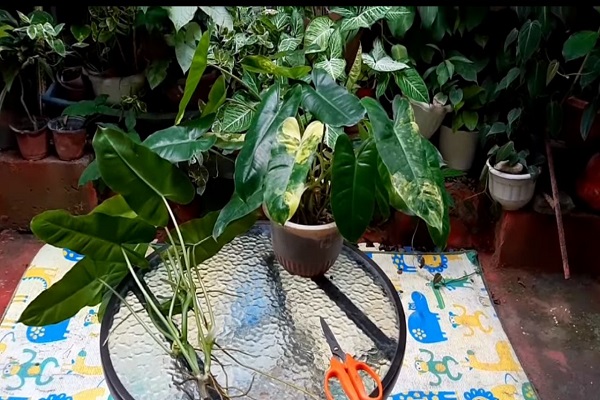
Your Burle Marx Plant doesn’t require pruning. If your plant has healthy green leaves and stems, you don’t need to prune. You should remove any leaves that are brown, dry, or dead, as well as any that are diseased or severely pest-infested, from your Philodendron Burle.
You can occasionally prune plants merely for aesthetic purposes. You can prune healthy stems if you want the plant to branch out below the cut. YOU can therefore cut off the top of a stem in that situation. Your plant will become bushier as a result.
Philodendron Burle Marx Toxicity
Philodendron Burle Marx is dangerous for humans and animals, like dogs, cats, and horses.
Toxicity To Humans
Burle Marx Philodendron is poisonous to people and shouldn’t be eaten. If you eat it, you might throw up, get sores and swelling in your mouth, have trouble swallowing, and have other problems.
Toxicity To Horses, Cats & Dogs
Philodendron Burle Marx is dangerous for horses, cats, and dogs, so they shouldn’t eat it. If you think your pet has eaten any part of this plant, you should call your vet or an animal poison control center.
Problems You Can Face For Philodendron Burle Marx
Philodendron Burle Marx is a lovely plant that makes a wonderful addition to any home. However, there are a few challenges associated with growing this plant.
Leaves Turning Yellow And Brown
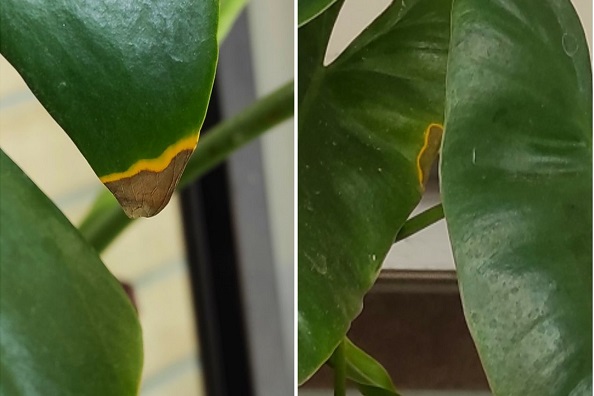
It is normal for this Philodendron to have a few yellowish-colored leaves. But if a lot of Burle Marx leaves turn yellow, it’s usually because the plant isn’t getting enough light, water, or enough nutrients.
Most of the time, a philodendron Burle Marx’s leaves turn brown because it gets too much water. Salt buildup and too much fertilizer are also factors. If you have checked your plant and found it has not been overwatered, you can flush it by slowly running a faucet or hose over it. This will push any salt from overfertilization out of the drainage holes.
Philodendron Burle Marx Diseases And Pests
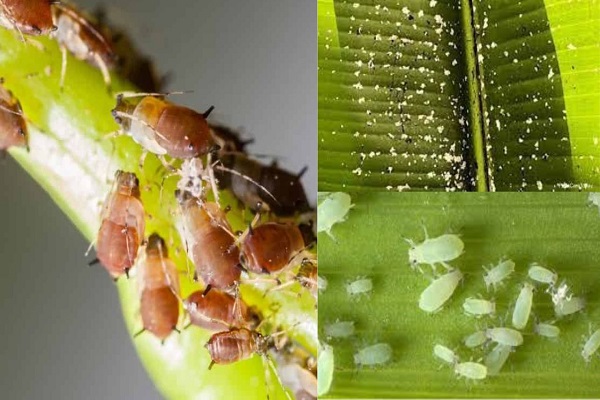
Burle Marx is a very hardy plant that doesn’t usually get sick, even in bad conditions. But root rot and other fungal and bacterial infections are caused by soil that is too wet and doesn’t get enough air. Use a well drains soil mix and a pot with drainage holes.
Philodendrons are mostly pest-free houseplants in the long run. This plant can sometimes get aphids, scale, mealybugs, or spider mites. Once you see these bugs, put the plant in a separate room and spray it with neem oil or soap that kills bugs.
Frequently Asked Questions
Why Is My Burle Marx Light Green?
One possible reason your Burle Marx plant is light green is that it isn’t getting enough light. Plants need sunlight to produce chlorophyll, which gives them their green color. Chlorophyll also helps plants convert sunlight into food energy. So, if your Burle Marx plant isn’t getting enough sunlight, it will be a lighter green than normal.
Another possible reason for your plant’s light green color is that it’s not getting enough nutrients.
Why Are Your Philodendron Burle Marx’s Leaves Falling Off?
Your Philodendron Burle Marx may be losing leaves for various causes, including senescence, regular leaf loss, overwatering, underwatering, a lack of light, pests, infections, and more. Overwatering is one of the biggest causes of a Philodendron Burle Marx plant losing leaves.
Overwatering your Burle Marx will prevent oxygen from reaching your plant roots. Root rot is more likely when there is less oxygen. The plant is left without something to absorb moisture with once the roots have perished.
You shouldn’t quickly draw inferences and blame your Phildonedron Burle for specific illnesses or diagnoses.
Regular leaf loss is typical; it is a natural component of a plant’s lifespan. Most plants lose their older leaves as they develop new ones as they expand.
Does Burle Marx Variegated Climb?
Philodendrons enjoy climbing and growing in their natural habitat. The only difference is that you will need to assist it as it climbs, trails, and spreads when cultivated as an indoor plant. Provide it with a moss pole, a trellis, or pegs to promote climbing.
What Makes The Philodendron Burle Marx Dangerous?
Calcium oxalate crystals are abundant in the leaves of the Philodendron Burle marxii. Calcium crystals are extremely harmful to your health and might weaken your immune system.
Can You Propagate Burle Marx?
It is possible to propagate Burle Marx through a process of layering. This method involves carefully stripping a section of bark from the plant’s stem and then covering the exposed area with moist sphagnum moss. The moss is then covered with a plastic sheet, which helps to retain moisture and keep the temperature consistent. After several weeks, the roots will begin to form, and you will transplant the plant into a pot or garden bed.
Final Touch
The best way to care for your Burle Marx Philodendron is to give it bright, indirect light and keep the soil moist but not soggy. These beautiful plants are relatively easy to care for, making them a great choice for beginner plant parents. With a little love and attention, your Burle Marx Philodendron will thrive and bring you years of enjoyment.

My name is Md Deloar Hossain and I’m the creator of Club Gardening, designed for all your gardening ideas, gardening product reviews, and a place to help you find the best gardening experience possible.

